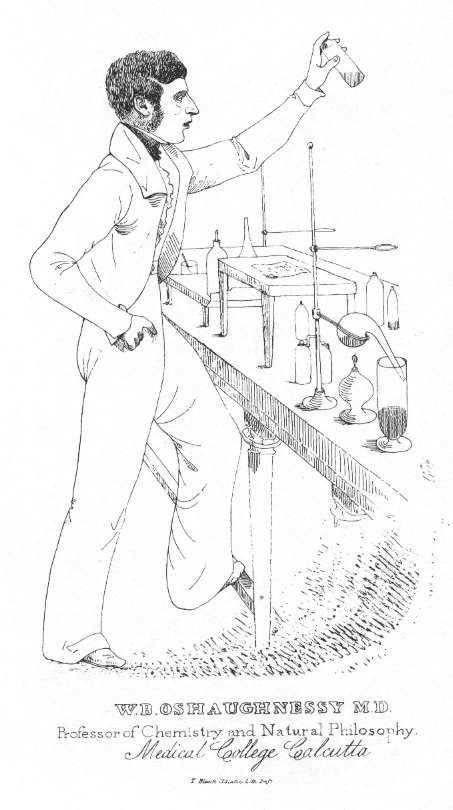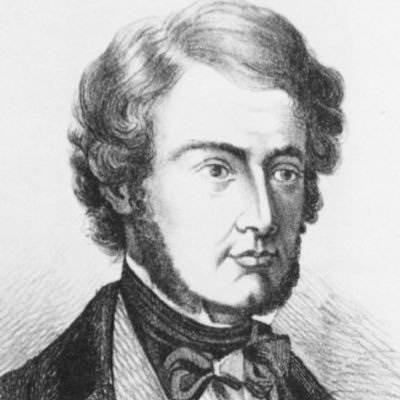Cannabis as medicine is not a new concept nor is it a new idea to research the medical effects of this plant. I recently acquired the book, “Cannabis Collected Clinical Papers Vol. 1 Medical Marijuana Papers 1839-1972,” and I am going to go through each medical paper on cannabis and break down the studies for my readers.
The first medical paper I am going to go over is, “On the Preparations of the Indian Hemp, or Gunjah,” by W.B O’Shaughtnessy. His clinical study was originally published in Transactions of the Medical and Physical Society of Bengal, 1838-40.
 O’Shaughtnessy was English doctor working for the East India Company and he published his research to be able to, “Market the introduction of marijuana into western medicine.” However, he did not come to this choice easily. He did his homework. He starts by going over what parts of the world already know the effects of the plant. He details all the botanical information about the plant. He does also note that the plant is also used for making cordage in Europe. He also goes over the details of the popular uses of cannabis from the medicinal the use for intoxication in the far East. He had also taken information out of Journal de Pharmacie in published in 1810 where Napoleon’s apothecary published medicinal uses.
O’Shaughtnessy was English doctor working for the East India Company and he published his research to be able to, “Market the introduction of marijuana into western medicine.” However, he did not come to this choice easily. He did his homework. He starts by going over what parts of the world already know the effects of the plant. He details all the botanical information about the plant. He does also note that the plant is also used for making cordage in Europe. He also goes over the details of the popular uses of cannabis from the medicinal the use for intoxication in the far East. He had also taken information out of Journal de Pharmacie in published in 1810 where Napoleon’s apothecary published medicinal uses.
O’Shaughtnessy decided that he would need to do some experiments. He started by testing on Animals first, but quickly moves to human experiments. Since he was doing this control he details how to make cannabis extract. The process is basically a similar processes to making RSO. Then mixes increasing does of the RSO with alcohol to dissolve it back into an alcohol. Essentially making a tincture of and adjusting potency. Measuring the dose in grains of the extract. These experiment were done not to test the medical effects but he was testing for safety. I don’t agree with him testing safety of cannabis on children, but I can’t change what happened in the early 1800.
The first experiment he gives a dog 10 grains worth.
The second experiment he give a dog a Majoon a popular cannabis infused food.
The third, forth, and fifth experiment he give 10 grains worth to 3 local children.
The sixth experiment he gave 20 grains worth to a dog.
He does continue to do other experiments but does not detail them specifically, but does come to the conclusion that, “no hesitation could be felt as to the perfect safety of giving resin of hemp an extensive trail in the case in witch its apparent powers promised the greatest degree of utility.” It is also important to note a few other things at this point as well. The terms used in the medical study of the cannabis plants vary. O’Shaughtnessy uses more than one term it show the interchangeability of the terms of this plant even in the 1800’s. He uses both local terms such as bhang; also he uses scientific terms cannabis sativa and cannabis indica; he also uses a few slang terms such as hemp as this was short for Indianan Hemp, but calls the flower tops specifically, Gunjah. This is what the Resin of the hemp plant is made out of.
Since he determined that cannabis was not toxic at least to the dose of 20 grains at this point and started using the cannabis extract on a few medical patents in his practice.
The first case he selected three acute cases of Rheumatism. Two of the three men become intoxicated after the administration of the hemp oil. The third admitted that he used the ganja pipe and had not been intoxicated by the hemp oil. After three days of receiving treatment the men had become , “relieved of their rheumatism.” He also treats a forth case after the success of the first three. He noted how the alleviation of pain and increase of appetite along with great cheerfulness with no case of delirium or quarrellings.
The next case was a case of hydrophobia. Small bit of background on this case. The man was bitten by a rabid dog three weeks prior. One effect of rabies on humans is an intense reactionary fear to drinking water or more when your thirst drives you mad enough to drink you have a bad reaction to water as you drink it. Ultimately the patent died in this case from the rabies. However O’Shaunghtnessy notes that, “ at least one advantage was gain from the use of this remedy;–the awful malady was stripped of its horrors; if not less fatal than before.”
An outbreak of Cholera during the time O’Shaughtnessy in India and there were several attempts to use cannabis oil to treat the outbreak, “and cures were daily reported by its alleged efficacy. Dr. Goodeve [who was a doctor at the medical college of Calcutta] was thus led to try it in several cases, and his report was in highest degree favorable.” However, O’Shaughtnessy does concluded that using cannabis hemp oil for treating Cholera was inconclusive but worth further investigation.
O’Shaughtnessy then tested out the use of hemp oil on a case of tetanus also called lock jaw. The person he treated he was able to use several doses to relax the person and eventually was able to use their jaw again. He said, “…the sedative powers of the remedy in the most favorable light.” This person did die from their injury that caused the lock jaw by refusing an amputation. However he does note that several other case that were deemed to far along to treat had success with treat of hemp oil saving people thought un-treatable. Not everyone was able to be saved using cannabis oil on case saw 2 out of 3 success with another with 4 out of 8 and without this treatment the likely hood was that all these case would have been fatal.
The next case is show the incredible power of cannabis oil. A case of a 40 day old child had an attack of convulsive paroxysms that would happen at night that was resistant to the treatments at the time. With the child getting worse, O’Shaughtnessy suggested using the hemp oil he made. He started the child on a dose of 1/20th a grain and with no results tried 1/10th a grain or two drops. This gave the child four days without any convulsions. When suddenly they came back. This was later found to be caused by the evaporation of alcohol and the cannabis resin adherer to the container side and the child had been given daily does of the liquid that O’Shaughtnessy say was only water. This show that the understanding of cannabis medicine as non water solubility was inveterately discovered. The child however had taken a turn for the worse while not getting the cannabis medicine. With a new batch of tincture made the child was given increasing larger does when it did not respond. One day requiring 130 drop or equal to 15 grains of resin. The child recovers and over a month later had become, “plump and happy.” This case O’Shaughtnessy biggest take back is that the hemp resign ability to be used in a wide spectrum of dose size. He mentions that the narcotic effects of hemp as he pointed out a medical student had taken 10 drops of a tincture and become severely intoxicated, or how that 1 grain was given to men with rheumatism that caused some to go into an intermittent trance, and yet 130 drops equal to 15 grains could be used on a 60 day old child to stop it from convulsing. What this really shows is how even in extremely large does that hemp resin or cannabis resign high in THC is non fatal. O’Shaughtnessy would not have known about THC at the time. The individual cannabinods had not been discovered. However, it can be determined that O’Shaughtnessy hemp resign had THC due to the psychoactive properties experienced by his patients and some medical students personal experiments.
 In his conclusion to his medical study it was the anti convulsive properties of the cannabis resin that had impacted him most; he stated, “that in hemp the [medical] profession has gain an anti-convulsive remedy of the greatest value.” He did not want the personal fame in this endeavor he wanted wide spread study of this effect and stated this as why he immediately published his results have the “most extensive and speediest trails” to be given to his new found remedy. Then concludes with his recipe for extracting and preparing the hemp resin so others could duplicate how he made the it. His discovery makes him arguably the founder of the medical cannabis movement that is still happening today as he was one of the first to bring the idea of cannabis medicine into the minds of western medicine.
In his conclusion to his medical study it was the anti convulsive properties of the cannabis resin that had impacted him most; he stated, “that in hemp the [medical] profession has gain an anti-convulsive remedy of the greatest value.” He did not want the personal fame in this endeavor he wanted wide spread study of this effect and stated this as why he immediately published his results have the “most extensive and speediest trails” to be given to his new found remedy. Then concludes with his recipe for extracting and preparing the hemp resin so others could duplicate how he made the it. His discovery makes him arguably the founder of the medical cannabis movement that is still happening today as he was one of the first to bring the idea of cannabis medicine into the minds of western medicine.
It is amazing to me how long ago a medical study had been done on cannabis. It amazes me not because that one was done, but because it had fallen deaf to modern ears after the prohibition of marijuana in 1939. I have heard modern doctors and other educated people tell me that no medical studies have been done on cannabis, or not enough have been done, or that there has not been enough time to study the medical effects. Yet, in 1839 a huge discovery had been published in a medical journal. How did these people come to this conclusion? Did they look for any? There are several of them. The anthology, “Cannabis Collected Clinical Papers Vol. 1 Medical Marijuana Papers 1839-1972,” was first published in 1972. I can’t wait to discover what other great information will be uncovered in this anthology. I will keep reading and as always I will,
Spread Cannabis Knowledge!
FibroMan

